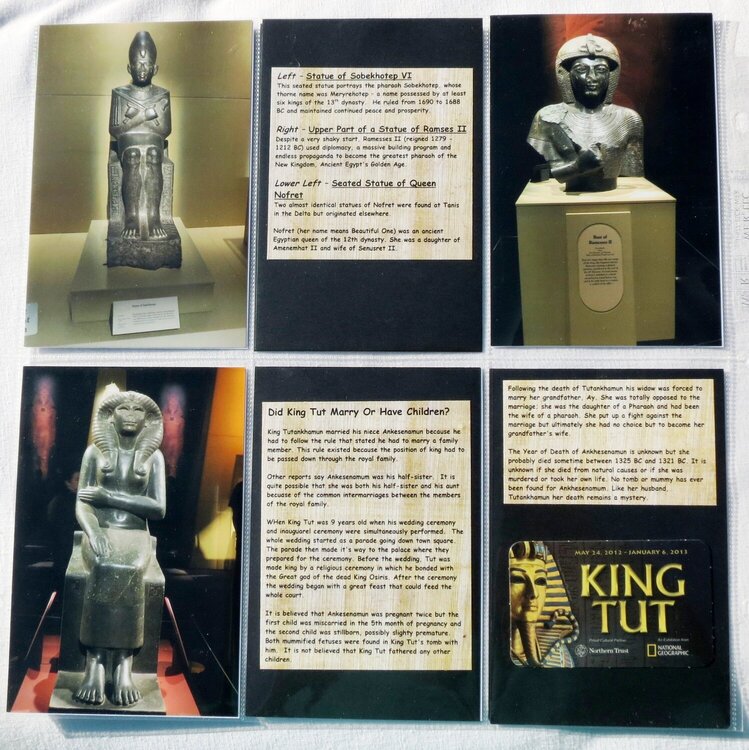

 Give a Cheer
Give a Cheer
Left – Statue of Sobekhotep VI
This seated statue portrays the pharaoh Sobekhotep, whose thorne name was Meryrehotep – a name possessed by at least six kings of the 13th dynasty. He ruled from 1690 to 1688 BC and maintained continued peace and prosperity.
Right – Upper Part of a Statue of Ramses II
Despite a very shaky start, Ramesses II (reigned 1279 - 1212 BC) used diplomacy, a massive building program and endless propaganda to become the greatest pharaoh of the New Kingdom, Ancient Egypt's Golden Age.
Lower Left – Seated Statue of Queen Nofret
Two almost identical statues of Nofret were found at Tanis in the Delta but originated elsewhere.
Nofret (her name means Beautiful One) was an ancient Egyptian queen of the 12th dynasty. She was a daughter of Amenemhat II and wife of Senusret II.
Did King Tut Marry Or Have Children?
King Tutankhamun married his niece Ankesenamun because he had to follow the rule that stated he had to marry a family member. This rule existed because the position of king had to be passed down through the royal family.
Other reports say Ankesenamum was his half-sister. It is quite possible that she was both his half-sister and his aunt becuase of the common intermarriages between the members of the royal family.
WHen King Tut was 9 years old when his wedding ceremony and inauguarel ceremony were simultaneously performed. The whole wedding started as a parade going down town square. The parade then made it's way to the palace where they prepared for the ceremony. Before the wedding, Tut was made king by a religious ceremony in which he bonded with the Great god of the dead King Osiris. After the ceremony the wedding began with a great feast that could feed the whole court.
It is believed that Ankesenamun was pregnant twice but the first child was miscarried in the 5th month of pregnancy and the second child was stillborn, possibly slighty premature. Both mummified fetuses were found in King Tut's tomb with him. It is not believed that King Tut fathered any other children.
Following the death of Tutankhamun his widow was forced to marry her grandfather, Ay. She was totally opposed to the marriage; she was the daughter of a Pharaoh and had been the wife of a pharaoh. She put up a fight against the marriage but ultimately she had no choice but to become her grandfather's wife.
The Year of Death of Ankhesenamun is unknown but she probably died sometime between 1325 BC and 1321 BC. It is unknown if she died from natural causes or if she was murdered or took her own life. No tomb or mummy has ever been found for Ankhesenamum. Like her husband, Tutankhamun her death remains a mystery.
No products have been added to this project.
Thanks for spreading positivity!
March 11, 2013
February 28, 2013
February 23, 2013
February 19, 2013
February 19, 2013
February 18, 2013
February 17, 2013
February 17, 2013
February 16, 2013
February 16, 2013
February 14, 2013
February 14, 2013
February 13, 2013
February 13, 2013
February 13, 2013
February 13, 2013
February 13, 2013
February 13, 2013
February 13, 2013
February 12, 2013
February 12, 2013
February 12, 2013
February 12, 2013